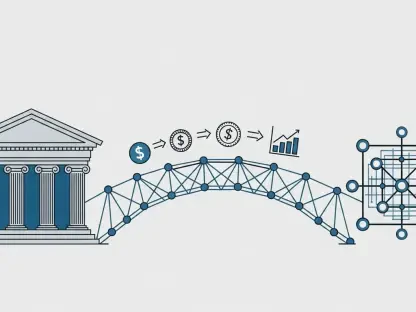In a rapidly evolving digital landscape, the cryptocurrency world stands at a critical juncture where regulatory clarity could define its trajectory for decades to come, and Hester Peirce, often referred to as a champion of crypto innovation during her tenure at the Securities and Exchange Commission (SEC), has put forward a groundbreaking vision for non-fungible token (NFT) governance that promises to reshape the industry. Her proposals, focusing on clear guidelines and a balance between innovation and compliance, aim to address long-standing uncertainties that have deterred institutional investment and hindered broader adoption. As the NFT market continues to explode with creative and financial potential, the need for a structured framework has never been more pressing. Peirce’s ideas could serve as a catalyst, transforming how creators, investors, and regulators interact within this dynamic ecosystem. This discussion delves into the core aspects of her vision and explores the potential impacts on the future of crypto.
Regulatory Clarity as a Market Catalyst
Hester Peirce’s vision for NFT governance centers on the pressing need for regulatory clarity, a factor that could significantly alter the cryptocurrency landscape. By advocating for explicit guidelines on NFT classification—specifically asserting that most NFTs should not be treated as securities—her framework seeks to remove the ambiguity that has long plagued the market. This clarity is expected to act as a powerful signal to institutional investors, who have often remained on the sidelines due to legal uncertainties. With a more defined regulatory environment, these investors might feel encouraged to explore opportunities in the NFT space, potentially leading to an influx of capital. Such a shift could spur the development of sophisticated financial products, including NFT-based derivatives or structured offerings, integrating digital assets more deeply into traditional finance. The ripple effects of this change could redefine market dynamics, fostering a more robust and mature ecosystem for all participants.
Beyond attracting institutional interest, regulatory clarity under Peirce’s plan could enhance overall market confidence in ways that extend to individual investors and creators. A transparent framework would provide a sense of security, reducing the fear of unexpected legal repercussions that often deters participation in the NFT market. For artists and developers, this means a safer space to innovate without the constant threat of regulatory overreach. Additionally, clear guidelines could streamline compliance processes, making it easier for smaller players to operate within legal boundaries. This aspect of Peirce’s vision addresses a critical barrier to entry, potentially leading to a more diverse pool of participants in the crypto space. As trust in the system grows, the NFT market might witness increased activity, driving liquidity and encouraging broader adoption of digital assets across various sectors. The long-term implications of such confidence could solidify NFTs as a legitimate and integral part of the global financial system.
Balancing Innovation with Consumer Protection
A cornerstone of Hester Peirce’s approach to NFT governance lies in striking a delicate balance between fostering innovation and ensuring consumer protection. Her proposals emphasize the integration of technology, such as smart contracts and regulatory technology (RegTech), to automate compliance processes. This innovative use of technology aims to minimize fraudulent activities and misrepresentations that have occasionally tarnished the reputation of the NFT space. By embedding compliance into the very fabric of transactions through automation, creators can focus on their craft rather than navigating complex legal requirements. Simultaneously, investors benefit from enhanced transparency, gaining greater assurance that their dealings are secure and legitimate. This dual focus could help cultivate a healthier ecosystem where innovation thrives without sacrificing the safety of participants, addressing a long-standing tension in the crypto industry.
Another vital element of this balance is how Peirce’s framework seeks to protect consumers without stifling the creative potential that defines the NFT market. By advocating for regulations that are proportionate and tailored to the unique nature of digital assets, her vision avoids the heavy-handed approaches that could suppress growth. Instead, the emphasis is on creating mechanisms that deter bad actors while allowing genuine innovators to experiment and push boundaries. This approach could lead to the development of new use cases for NFTs, from digital art to tokenized real estate, expanding the market’s reach. Furthermore, by prioritizing consumer protection through clear rules and automated systems, Peirce’s plan might reduce the incidence of scams and disputes, fostering a more trustworthy environment. Such stability could encourage mainstream adoption, as everyday users gain confidence in the integrity of NFT transactions and the broader crypto landscape.
Financial Inclusion Through Crypto Payroll Systems
One of the more transformative aspects of Hester Peirce’s NFT governance vision is its potential to drive financial inclusion, particularly through the use of crypto payroll systems. By leveraging NFTs and blockchain technology, her proposals highlight secure and transparent payment channels that could empower unbanked and underbanked communities. For many individuals lacking access to traditional banking infrastructure, these systems offer a viable alternative to participate in the digital economy. This initiative could enable marginalized groups to receive payments, access services, and engage in transactions that were previously out of reach. The broader implication is a democratization of financial opportunities, allowing more people to benefit from the economic potential of cryptocurrencies and NFTs. This focus on inclusion aligns with the ethos of decentralization that underpins much of the crypto movement, potentially reshaping societal access to wealth.
Expanding on this theme, the implementation of crypto payroll systems under Peirce’s framework could also address systemic inefficiencies in global remittances and wage distribution. Traditional financial systems often impose high fees and delays, disproportionately affecting vulnerable populations. By contrast, NFT-based payroll solutions could offer near-instantaneous transactions with minimal costs, providing a lifeline for workers in remote or underserved regions. Additionally, the transparency of blockchain ensures that payments are traceable, reducing the risk of exploitation or fraud. This aspect of Peirce’s vision could foster greater economic equity, as individuals gain direct control over their earnings without intermediaries. As these systems gain traction, they might inspire further innovations in financial technology, creating a ripple effect that extends beyond NFTs to other areas of crypto, ultimately contributing to a more inclusive global economy.
Challenges and Opportunities for Small Enterprises
Hester Peirce’s regulatory framework for NFTs presents a mixed landscape for small and medium enterprises (SMEs) operating in the crypto sector, with both significant opportunities and notable challenges. On one hand, the clarity and structure of her proposed guidelines could level the playing field, protecting smaller players from unfair competition by non-compliant platforms or larger entities. This protection is crucial for SMEs, which often lack the resources to navigate ambiguous legal environments. A well-defined regulatory space might encourage these businesses to innovate, knowing they are shielded from sudden policy shifts or predatory practices. As a result, the NFT ecosystem could see a surge in diverse offerings from smaller firms, enriching the market with unique perspectives and solutions that might otherwise be overshadowed by dominant players.
However, the flip side of this regulatory clarity is the potential burden of compliance costs that could disproportionately impact SMEs. While larger corporations may have the capital to adapt to new requirements, smaller entities might struggle to meet the financial and operational demands of adherence. This challenge raises concerns about market consolidation, where only well-funded players survive, potentially reducing competition and innovation in the long run. Peirce’s vision, therefore, must carefully consider mechanisms to support SMEs, such as tiered compliance standards or subsidies for smaller firms. Without such measures, the very diversity her framework aims to foster could be at risk. Balancing the needs of SMEs with the broader goals of market stability will be critical to ensuring that her governance model benefits the entire crypto ecosystem, rather than just its most resourced participants.
Reflecting on a Path Forward for Crypto Governance
Looking back, Hester Peirce’s proposed NFT governance framework stands as a pivotal moment in the evolution of cryptocurrency regulation. Her emphasis on clarity, innovation, and inclusion tackles some of the most persistent challenges faced by the industry, offering a blueprint for a more structured and accessible market. The focus on empowering unbanked communities and supporting market confidence through technological solutions demonstrates a forward-thinking approach that resonates with many stakeholders. However, the hurdles for small enterprises underscore the complexity of implementing such sweeping changes. Moving forward, the crypto community could take actionable steps by advocating for tailored support mechanisms for SMEs and investing in RegTech solutions to streamline compliance. Engaging with regulators to refine these proposals could ensure that the balance between innovation and protection remains intact, paving the way for a sustainable and inclusive future for digital assets.









